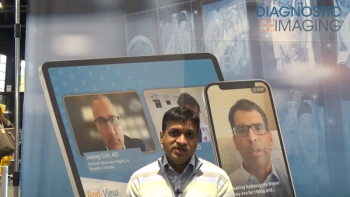
A More Effective Model for Lung Cancer Screening
Lung cancer screening based on PLCOm2012 model criteria is more effective than the USPSTF criteria.
Use of new criterion improves lung cancer screening efficiency, according to a study published in
Researchers from Ontario, Canada; Minnesota; Wisconsin; South Carolina; Michigan; and Maryland sought to identify a risk threshold for selecting individuals for lung cancer screening, compare its efficiency to the U.S Preventive Services Task Force (USPSTF) criteria, and determine whether never-smokers should be screened.
The USPSTF recommends annual screening based on hard cutoffs for age and smoking duration/intensity, and does not recommend screening former smokers who quit more than 15 years ago.
The researchers applied the PLCOm2012 model, which was based on six-year lung cancer incidence, to identify people who should receive annual CT screening. This threshold was applied, alongside the USPSTF criteria, to smokers who were screened in the PLCO trial.
The results showed that 8.8% fewer people exceeded the threshold than met the USPSTF criteria, but 12.4% more lung cancers were identified using the threshold. Using the threshold resulted in higher sensitivity (80.1% versus 71.2%), specificity (66.2% versus 62.7%), and positive predictive values (4.2% versus 3.4%) than UPSTF criteria.
Among the former smokers, 8.5% who quit more than 15 years ago exceeded the PLCOm2012 threshold. No never-smokers exceeded the threshold. Risks and incidence of lung cancer were significantly greater for smokers aged 65 to 80 than among those aged 55 to 64.
"This should make lung cancer screening more attractive for policy-makers, and more affordable for health systems,” the authors said.
Use of the PLCOm2012 risk criterion can improve screening efficiency, the authors concluded.
Newsletter
Stay at the forefront of radiology with the Diagnostic Imaging newsletter, delivering the latest news, clinical insights, and imaging advancements for today’s radiologists.



























